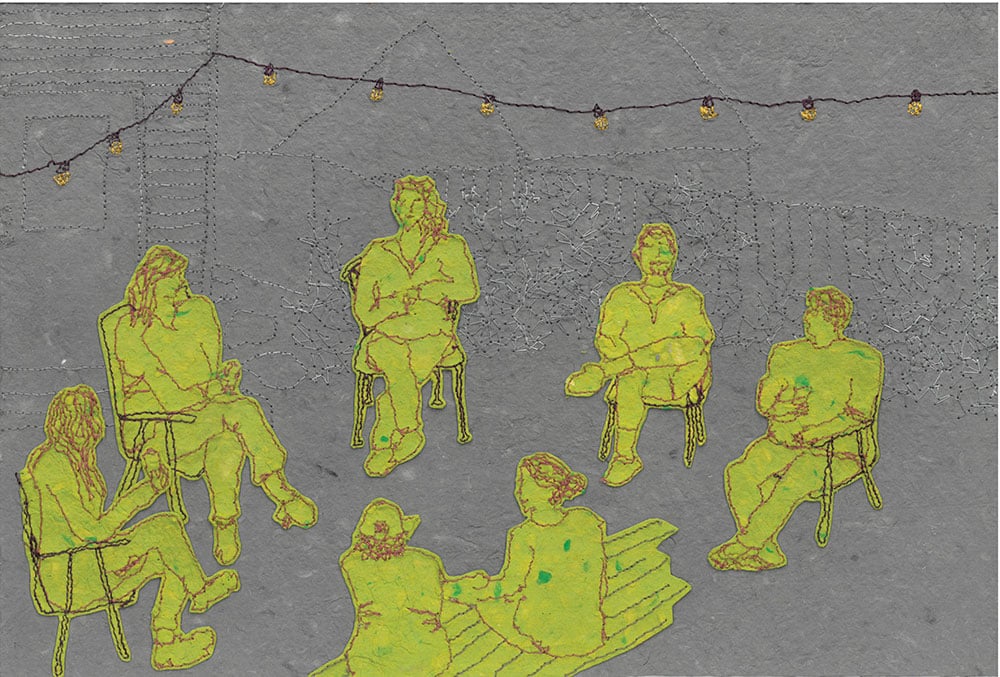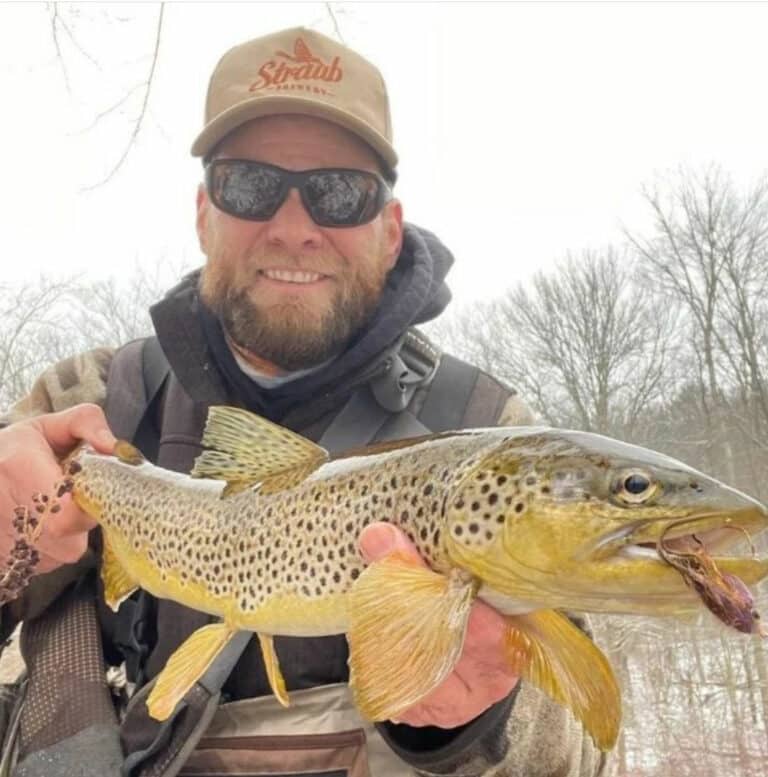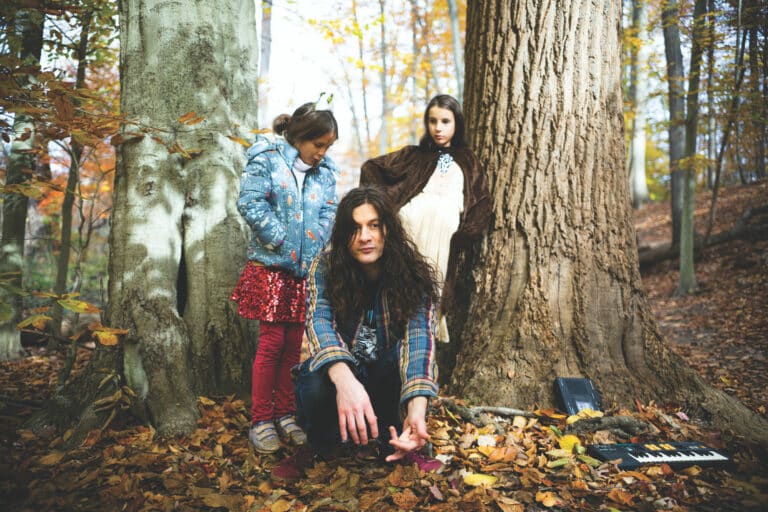A bicycle can be used for any number of tasks—from transportation and deliveries to recreation, it’s a versatile tool. For Nevada Tribble, it’s a part of her art.
Tribble, a fiber artist and sculptor, started working on her sewing bicycle in college. Sewing has always been a part of her life as she made and mended her clothes throughout the years. But it wasn’t until she started working part-time at the sewing shop in her hometown of Elkins, W.Va., and learned about free motion quilting that she began to see sewing as a drawing tool.
If you’re having trouble picturing how a sewing machine could replace a pencil or pen, Tribble says to, “Imagine drawing, except you’re holding a pencil still and moving a piece of paper underneath it.” As she started experimenting with the sewing machine, needle, and thread on paper, Tribble knew she wanted to be able to do more drawing from life and observation.
However, unlike paper and pencil, a sewing machine requires a power source—something not easily available when working outside. “My first idea was to somehow get an extension cord to my car to power one,” Tribble said. “That seemed a little too dangerous.” Enter the bicycle.
With the help of a professor, Tribble rigged an old sewing machine from the mid-1900s to the back of her bike. After taking the motor out, she connected the machine to the back wheel with a system of belts. Now, she can walk the bike to wherever she’s planning to draw that day, put down the stand to lift up the back wheel, and pedal in place to make the needle go up and down.
It’s a lot more of a physical process than sitting at a machine on a table. “It’s not like biking up a hill or anything,” Tribble said. “It just involves more full body movement. It’s a little trickier because you’re kind of hunched over the back of the bike and balancing.”

The Technique
Most of Tribble’s pieces start with making paper, a practice she took up in order to have more control over her supplies and final product. By making the paper herself, she could more easily dictate things like color, size, and thickness.
Starting with pulp she buys from a paper studio, Tribble then processes it with a drill mixer and suspends the ground-up pulp in water. Using a screen, she collects the pieces into the shape and size she wants before setting it out to dry. Tribble’s in the process of buying a Hollander beater, a machine that would allow her to process her own pulp from gathered plant fibers, giving her control over every step of the paper.
Sewing on paper rather than fabric gives Tribble more command over her final piece. “I can cut out really complicated shapes and not have to worry about fraying edges,” she said. Tribble also discovered that before the paper dried, she could mold it around objects to create more three-dimensional pieces. “Once you start one thing, it opens another door and another door, and leads you to different possibilities,” she said.

A Gathering of Neighbors
Taking all she’s learned about making paper, sewing on paper, and molding paper, Tribble’s most recent projects explore themes of hope and community.
In “Around the Block,” Tribble uses her sewing bicycle to draw portraits of life in quarantine. Having just moved back to Elkins at the beginning of the pandemic, she wanted to explore her feelings around returning and finding her place within the community again. In many ways, it’s about how a community endures over time and the ways in which we all struggle to feel like we fit in.
She captures neighbors sitting on their porches or taking walks past her house, waiting for those moments of interaction. “By bringing the bike out and making the work in the place that it’s about, I get to engage with the community as I’m doing it,” Tribble said. “It feels like a really satisfying circle of interaction.”
The reaction to her bike is one of her favorite parts of the work. Neighbors on foot will stop and ask questions, allowing her to engage with the community on a personal level. People in cars will do a double take as they’re driving past once they realize it’s no ordinary bike. “I think that the key to solving a lot of big societal issues that we have is building really strong communities,” Tribble said. “I’m observing a strong community on a micro level and daydreaming about how that could be applied in other ways. I hope it encourages people who live anywhere to think about the best parts of their community.”
Tribble’s second quarantine project is “Paper Potluck,” a series of paper molds of borrowed dishes combined with oral and written stories. She started by thinking about who she would invite to a potluck in real life, and then asked those people to participate.
“I was missing that feeling of a shared meal,” she said. “So being able to gather these stories and memories from people has felt like a way to experience that when we can’t do it in the current moment.”
In a year filled with a lot of pain, loss, and anger, artists and audiences alike turned to art for peace, and sometimes answers. “Some of the time, I like to make this work when I’m feeling the least hopeful because making the art as an act reminds me of all of the good things around me,” Tribble said. “Art is kind of a compass or way pointer. It can point either to the problems that we need to solve or it can point to the good things that could potentially develop into solutions.”
As we look to start gathering in person again in the coming months, Tribble’s work is a reminder of the important role that community will play in the recovery process.
You can find more of Tribble’s work at NevadaTribble.com or on Instagram @nevada.wv.








